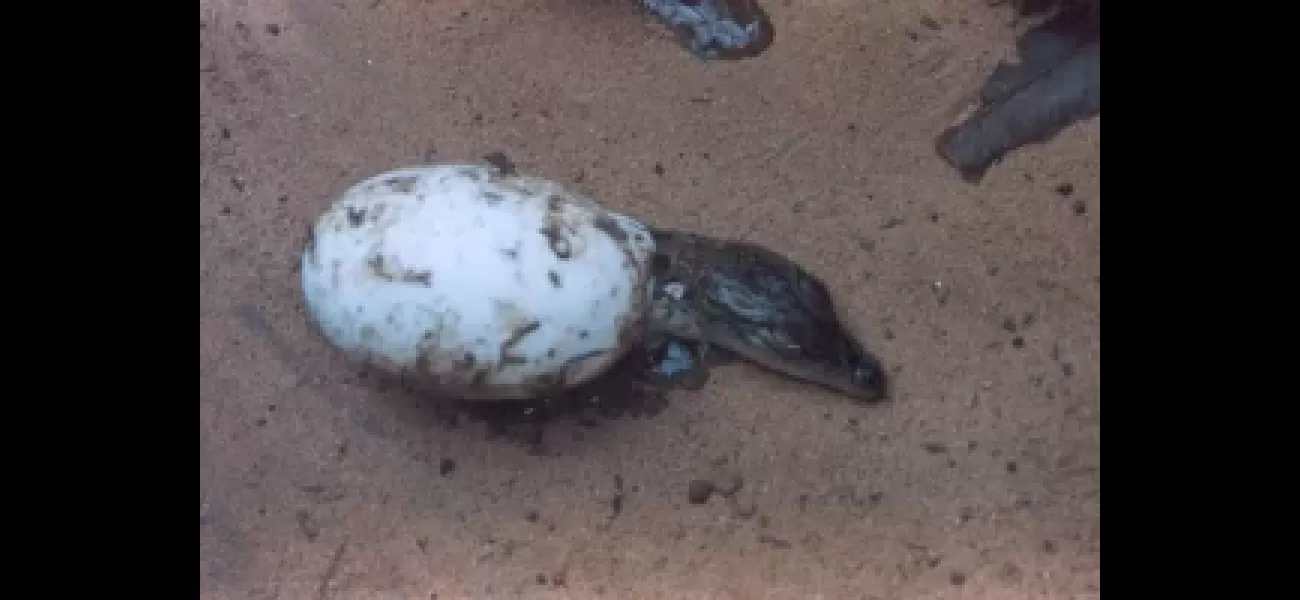Tiny crocodiles hatch in Bhitarkanika national park, emerging from their eggshells.
1,300 baby saltwater crocodiles have hatched and made their way to water in Odisha's Bhitarkanika National Park, marking the end of the breeding season.
August 10th 2024.

The annual breeding and nesting season for endangered saltwater crocodiles in Odisha's Bhitarkanika National Park has come to an end, with over 1,300 baby crocs hatching and making their way to nearby water bodies. This is a record-breaking number, with a total of 114 nesting sites being spotted in the park this year, according to forest officials.
Dr. Sudhakar Kar, a herpetologist and wildlife researcher from the Odisha forest department, believes that this increase in nesting sites is a result of better conservation efforts by the state forest department. The crocodiles build their nests using mangrove twigs, leaves, and mud on high, dry ground that is safe from flooding during the rainy season and receives direct sunlight.
It was a delightful sight for officials and staff to witness 1,348 baby crocs breaking out of their eggshells and making their way into the water bodies. This process has been ongoing for the past two days and will continue for about a week, according to a park official. The staff responsible for monitoring and protecting the nests were lucky enough to witness this rare natural phenomenon firsthand. However, they made sure to maintain a safe distance from the nests to avoid disturbing the crocodiles, who can become aggressive when humans interfere with their habitat.
Female crocodiles lay around 50-60 eggs, and the hatchlings typically emerge after 70-80 days of incubation. Sadly, the survival rate for these young crocs is quite low, with only one out of every hundred making it to adulthood. In the wild, they face threats from predators in the water, making conservation efforts even more crucial.
Fortunately, the state forest department has implemented effective conservation measures over the years, leading to a rise in the crocodile population. To ensure a disturbance-free nesting season, the wildlife sanctuary was closed to tourists and visitors from May 31st to July 31st. These animals can become agitated and aggressive with human interference, so it's important to give them space to thrive.
According to officials, there were a total of 1,811 crocodiles counted this year in the water bodies of the Mahanadi deltaic region. These estuarine crocodiles can also be found in West Bengal's Sundarbans and the mangrove wetlands of the Andaman Islands. However, the population and density of crocodiles in Bhitarkanika's wild habitat are significantly higher.
Dr. Sudhakar Kar, a herpetologist and wildlife researcher from the Odisha forest department, believes that this increase in nesting sites is a result of better conservation efforts by the state forest department. The crocodiles build their nests using mangrove twigs, leaves, and mud on high, dry ground that is safe from flooding during the rainy season and receives direct sunlight.
It was a delightful sight for officials and staff to witness 1,348 baby crocs breaking out of their eggshells and making their way into the water bodies. This process has been ongoing for the past two days and will continue for about a week, according to a park official. The staff responsible for monitoring and protecting the nests were lucky enough to witness this rare natural phenomenon firsthand. However, they made sure to maintain a safe distance from the nests to avoid disturbing the crocodiles, who can become aggressive when humans interfere with their habitat.
Female crocodiles lay around 50-60 eggs, and the hatchlings typically emerge after 70-80 days of incubation. Sadly, the survival rate for these young crocs is quite low, with only one out of every hundred making it to adulthood. In the wild, they face threats from predators in the water, making conservation efforts even more crucial.
Fortunately, the state forest department has implemented effective conservation measures over the years, leading to a rise in the crocodile population. To ensure a disturbance-free nesting season, the wildlife sanctuary was closed to tourists and visitors from May 31st to July 31st. These animals can become agitated and aggressive with human interference, so it's important to give them space to thrive.
According to officials, there were a total of 1,811 crocodiles counted this year in the water bodies of the Mahanadi deltaic region. These estuarine crocodiles can also be found in West Bengal's Sundarbans and the mangrove wetlands of the Andaman Islands. However, the population and density of crocodiles in Bhitarkanika's wild habitat are significantly higher.
[This article has been trending online recently and has been generated with AI. Your feed is customized.]
[Generative AI is experimental.]
0
0
Submit Comment





